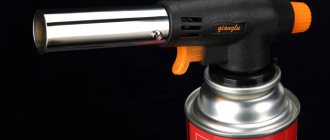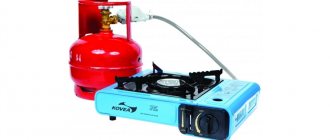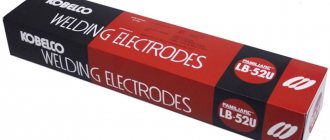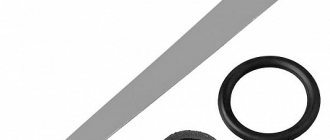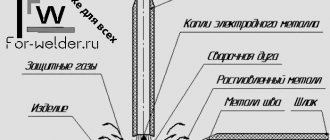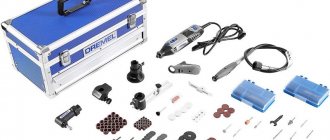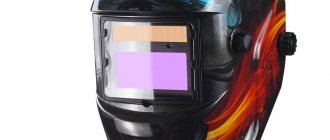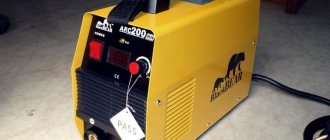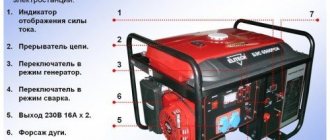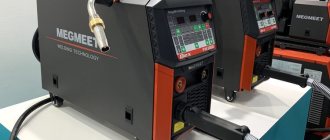Gas burners are devices that differ in design and in areas of applicability, but they have one thing in common - they operate on gas. Gas canister burners with piezo ignition are compact products that provide adjustment of the shape, power and temperature of the flame. These portable, refillable designs, powered by a small-volume tube filled with a gas composition, should not be confused with larger, industrial welding machines powered by bulk cylinders of natural gas.
Using a small burner, you can quickly light a barbecue, heat metal construction elements in the cold, or melt plastic parts.
The fire temperature (up to +1300°C) is quite enough for soldering metal structures.
A burner flame is often required at home, during hikes, and for light installation operations. In this context, their tourist use is especially popular, for example, for starting a fire or heating canned food.
The burners are designed so that they do not clog, do not require heating, and do not accumulate odors. Possessing extensive functionality, they have a very wide range of applications.
Structurally, these devices are different - from elementary products to complex mechanisms equipped with special air ducts and piezoelements. There are several types:
- portable stoves;
- tabletop stoves;
- burners.
The first are devices that include a cartridge with a gas composition, a special nozzle attached directly to the gas container or using adapter hoses.
The peculiarity of the top of the device is that containers of certain sizes can be installed on it.
The second are units with a spacious, horizontally located cooking part. The can is installed in the housing, where it is secured with a collet grip. Such products also provide for connection to conventional cylinders using special adapters and adapters.
The third type of product is produced in the form of nozzles put on a can, or mini-burners with built-in small gas containers.
The simplest design can be described as follows: a gas jet divider with a power regulator is attached to a gas cartridge, which also acts as a stand. At the same time, the device is compact, lightweight and inexpensive.
There are also sophisticated products that include folding supports and hoses with valves. They are larger in size and weight, but more stable.
Most of the models produced are equipped with piezo ignition, which ensures automatic ignition of the fuel. The function is convenient and practical, but to a certain extent it is quite vulnerable, requiring proper operation of the device.
Therefore, the ignition function should be duplicated.
Most household products belong to the category of injection devices, in which air is naturally sucked into the burner to maintain the fire. Inside the device, in a special chamber, fuel is mixed with air, and after a spark appears, the mixture ignites. Such injectors help increase productivity and reduce fuel consumption. Nozzles can be ring, slot or tubular.
The advantages of burners include:
- reliability and design simplicity;
- efficiency;
- ease of carrying;
- long service life;
- environmental friendliness;
- possibility of cooking food where making fires is prohibited.
Flaws:
- difficulties with disposal of cylinders;
- unreliable work in winter.
What are they?
Burners are distinguished by purpose, design, and types of fuel used. The intended purpose of burners largely determines the variety of their types and the conditions in which they are used. So, they distinguish:
- mini-burners (small);
- manual;
- portable travel;
- household;
- "pencils";
- for soldering;
- with gas control;
- infrared;
- alcohol
For example, portable units are used for:
- processing of wood products;
- devices with a “pistol” type directed flame are often used in installation types of work;
- processing of steel parts using solders;
- for making fires;
- for heating and cutting metal fragments;
- for thawing frozen pipelines.
Burners are a useful tool in auto repair shops, during the construction of greenhouses and other household structures. They are also divided according to the methods of attaching the cylinders. Several such types are known:
- on thread;
- collet - put on and turn a little;
- valves - on clamps;
- pierceable - connection with soft pressure.
Most often, threaded connections are used - they are reliable. Punctureable - do not turn off until the gas in the cartridge runs out.
The disadvantage of collet connections is that the fastener quickly becomes loose, leading to gas leaks. Valve types are more reliable.
Manufacturers use various types of flammable substances to inflate cartridges. The final selection of flammable substance is based on the intended use of the products, the required fire temperature, and power. To improve the composition parameters, several types of fuel are often mixed. The most commonly used combinations are:
- propane-butane (70: 30) - mainly for use in summer;
- propane, butane and isobutane in various combinations;
- MAPP – methyl acetylene propadiene (for welding).
Cartridges are often produced that are filled with some homogeneous substance. Fuel selection is especially important when work is planned in extreme weather conditions.
Tools and equipment for soldering copper pipes
Soldering is the process of obtaining a permanent connection by introducing molten solder into the space between the connected elements.
Solder is melted by the flame of a gas burner and always has a melting point lower than that of the pipe material, which allows it to evenly fill all cavities and form an even seam. There are two types of soldering:
- Low temperature. Solder melts when heated to 400-450°C. The method is excellent for installing household piping systems.
- High temperature. Gives a stronger connection. Melting point – 600-900°C. More often used for the construction of systems operating under high load conditions.
There are two types of solder for gas torches: soft and hard. The first is a flexible thin wire (2-6 mm cross-section) made of lead, tin, and other metal alloys. The second one is often produced in the format of rigid short rods. Additives of silver and phosphorus enhance the performance of the resulting compounds.
Thus, tin-lead solder (POS) is considered the most fusible (fluidity occurs already at 180°C). The addition of silver has a positive effect on the plasticity of the seam, increasing fluidity and adhesion. Copper-phosphorus solder is used not only for joining copper parts, but also effectively solders copper with brass and bronze. It is recommended to solder copper to steel using refractory solder, which contains at least 35% silver.
It is important! It is good if the solder material and pipes are characterized by the same thermal expansion rates. Such a pipeline will not be subject to mechanical stress in the area of the seams during operation.
In addition to solder, the following tools are useful for high-quality soldering of copper products:
- A gas torch (possibly a soldering iron) designed to work with copper.
- Pipe cutter Allows you to obtain a strictly perpendicular, even cut.
- Bevel remover. It will help remove burrs and align the edges to be joined.
- Expander. For fitting products of different diameters. The important thing to remember here is that the pipe being expanded must be annealed.
- Roulette, hammer.
Tips for choosing the best burner
People buy compact hand burners with pleasure, as they have many advantages over liquid fuel, more “serious” devices. They light quickly, hardly get dirty, and require a minimum of care.
Using a manual model is easy: the flame power can be adjusted and the torch can be directed at any angle, which is important when working in cramped conditions
Criterias of choice
The choice of a burner model should be approached in the same way as the choice of any other working tool, taking into account some features:
- it should fit comfortably in your hand,
- easy to turn on, operate and turn off,
- have piezo ignition (this is required in the characteristics) - optional,
- provide the ability to adjust the flame while working with one hand,
- if the burner is on a cylinder, have an adjustable nozzle angle.
You don’t have to focus on the maximum temperature stated in the specifications: where is 700-900 degrees required for hard solders, and where is 1300?
Thus, the main thing when choosing is not price, but functionality.
The best tourist gas burners
Traveling is one of the most common pastimes of modern people. Many people will prefer a trip to the beautiful places of our Motherland over a tour abroad. Naturally, this type of vacation requires some preparation. To cook food or heat water outdoors, you will need a special device. A gas burner is a particularly popular type of portable fuel equipment. She will be an excellent assistant on a hike. Tourist models are lightweight, highly fault-tolerant, and maintainable. The rating includes the best gas burners according to travelers.
Video description
Video instructions for soldering copper pipes with a gas torch:
Soldering with soft solder is carried out according to the following algorithm:
- The edges of the pipe sections are prepared and joined.
- Flux is applied to the contact area.
- Using a burner, the ends of the tubes are heated.
- As soon as the flux changes color, the edge of the solder wire is inserted into the joint.
- As the alloy melts, the structure is rotated around its axis as much as possible to fill it more evenly.
- Upon completion of the procedure, the metal is allowed to cool, after which the remaining flux is removed from its surface.
Brazing copper tubes with a gas torch is carried out in a similar way. The only excellent point in the technology is the need to preheat the refractory solder alloy so that it can acquire the desired state of ductility.
On a note! One of the most common mistakes during soldering is the wrong choice of solder. If possible, the alloy should have similar physical and chemical properties as the structure being connected. First of all, this concerns the coefficient of thermal expansion of metals. If there is a large difference, the seam will begin to deform over time and begin to leak.
The best camping gas burners for 2022
Models included in the review:
| KOVEA KB-0703WU Alpine Pot Wide UP | RUB 8,630 |
| KOVEA KB-0211G-L Moonwalker Stove Camp-4 | RUR 4,435 |
| KOVEA KB-0409 Solo Stove | 1538 rub. |
| GENGIZ KHAN 333-519 | 845 rub. |
| ECOS CS-G01 | 479 rub. |
| TOURIST MINI-1000 TM-100 | RUB 1,380 |
| TOURIST TULPAN-L TM-450 | 950 rub. |
TOURIST TULPAN-L TM-450
Budget model with wind protection and piezo ignition. Popular among buyers, mainly due to its low price. A power of 1.75 kW is enough to cook food for a company of 2-4 people.
Mounting for the fuel tank on the side, collet type. For ease of transportation there is a cover. We recommend using it at the cottage or on a picnic, or for simple trekking lasting up to two days. Not the best choice for a tough hike.
TOURIST TULPAN-L TM-450
Advantages:
- Low price;
- Wind protection.
Flaws:
- Large dimensions;
- The weight is large for tourist class equipment – 665 g.
- The four-legged structure is unstable.
TOURIST MINI-1000 TM-100
In sixth place in the ranking is the TOURIST brand burner. This is a Chinese manufacturer, massively present throughout Russia in chain stores of budget goods.
The type of cylinders used is collet type; they are connected to the device using a hose. A nice detail was the emphasis on the valve device, which will not allow the cylinder to roll.
The power of the device is 1.5 kW, which is enough to serve the needs of a group of 2-3 people. The weight is still high for a tourist class model - 450 g. TOURIST MINI-1000 is equipped with piezo ignition. Sold complete with a plastic case.
TOURIST MINI-1000 TM-100
Advantages:
- Remote mounting of the cylinder with a hose;
- A stopper that prevents the fuel container from tipping over and rolling.
Flaws:
- Heavy weight.
ECOS CS-G01
In fifth place is the lightest gas burner in this review, its weight is 80 grams. The fuel source connection is threaded. To reduce weight, the manufacturer abandoned auto-ignition and reduced the diameter of the burner nozzle. For such a modest size, the ECOS CS-G01 produces quite a decent power of 2.6 kW. To reduce the size, the legs on which the dishes are placed are foldable. When assembled for transportation, they are lifted up and pushed together.
ECOS CS-G01
Advantages:
- Light weight;
- Threaded cylinder mount.
Flaws:
- Fragile feet, should be handled with care.
Genghis Khan 333-519
The model's technical characteristics are completely equivalent to the TOURIST TULPAN-L TM-450 already present in the rating. There is only one manufacturer of the equipment; distributors use different colors and brands for sale in various retail chains.
Genghis Khan 333-519
Advantages:
- Low price;
- Wind protection.
Flaws:
- Large dimensions;
- The weight is large for tourist class equipment – 665 g.
KOVEA KB-0409 Solo Stove
In seventh place in the review is a burner from a South Korean brand. The name KOVEA is familiar to all lovers of extreme recreation and hiking. The company was founded in 1982 and specializes in gas equipment and related products. The company ranks first in the world in terms of its range of models. The ideology of the developers is a new model every month. KOVEA gas cartridges are used in every third gas burner in the world.
Comparison table of characteristics
Buying a high-quality burner is not easy, because the modern market offers devices in a wide variety of price categories. Below is a table with characteristics, and also tips for choosing the right gas burner.
| Product name | Power | Weight | Country of manufacture |
| Baltur BTG 11 | 48.8-99 kW | 11 kg | Italy |
| Elco VG4.460 DP KL | 100-460 kW | 29 kg | Switzerland |
| Pathfinder Hand Spider | 3.2 kW | 200 g | Russia |
| Sturm 5015-KL-02 | 1.8 kW | 217 g | Russia |
| KOVEA KB-0409 Solo Stove | 1.91 kW | 124 g | Korea |
| Kemper 1047SC | 1.8 kW | 600 g | China |
| Sturm 5015-KL-01 | 1.8 kW | 160 g | Russia |
| DAYREX DR-45 | 1.8 kW | 200 g | China |
| Sparta Turbo | 1.8 kW | 200 g | China |
| MATRIX 91427 | 1.8 kW | 300 g | China |
Experienced tourists and craftsmen recommend buying one of the models presented in this top. These devices successfully combine functionality, high quality and reasonable cost.
Rating of the best gas burners for a can
From all the variety, we can highlight the following models, which are most popular among buyers:
Rexant GT-19
Compact gas burner with adjustable flame level. Butane, propane and isobutane can be used as fuel. Fuel consumption – 80 g/h. Suitable for quickly heating surfaces. The maximum flame temperature is 1400 degrees Celsius. Price in stores – from 500 rubles.
ADVANTAGES:
- conveniently attaches to the cylinder with a click
- lights up the first time
- burns steadily
- There is a ignition button, the piece works properly
- sits tightly on the cylinder
FLAWS
- the gas is regulated very sharply, you need to turn the flame adjustment knob very smoothly
Rexant GT-19
Energy GTI-100
A high-power gas burner that can be used as a blowtorch. The main advantages are ease of use and compact size. Flame temperature – 1300 degrees Celsius. Another advantage is efficiency. Fuel consumption is only 80 g/h. Price – from 600 rubles.
ADVANTAGES:
- steady flame
- economical gas consumption
- presence of piezo ignition
- securely connects to the cylinder
- all plastic parts are located far from the heating point (they will not melt)
FLAWS
- when working with an inclination, preheating of the burner is necessary, otherwise the flame will be unstable
Energy GTI-100
DAYREX DR-45
What's with the prices?
A portable “Pencil” type burner, depending on the manufacturer and additional equipment in the form of nozzles, can cost from 400 rubles. (excluding the cost of a gas cylinder, a standard 220 ml is usually about 100 rubles). The model shown in Fig. 1, costs about 800 rubles. As a replacement for an electric soldering iron, it is an almost ideal option. There are options that cost significantly less than the above, are quite functional, but, as a rule, from an unknown manufacturer. You can take a risk and take it (if urgent and responsible work is not planned).
For individual soldering torches without gas cartridges, the price range is almost limitless. The simplest burners with the ability to connect to a gas source and a jet control valve (Fig. 3) of normal quality cost from 200 rubles. They are almost never used for precision work. This is, rather, a universal thing: you can solder something, but not everything, heat something up and bend or attach it. There will be a use. But for competent soldering you need an appropriate torch with the right tools, convenient and reliable.
A more ergonomic device (Fig. 2) is priced a little higher, like most Stayer MASTER MaxTerm models, in the range of 400-600 rubles. They are usually sold in transparent (on one side) plastic packaging, so you can immediately see what exactly is included in the kit in addition to the burner itself.
If you plan to purchase such a gas burner for soldering, so as not to regret it yourself and leave it as an inheritance for your son, you should choose proven brands.
For example, a gas torch-soldering iron DAYREX DR-22 in a case, that is, with a set of nozzles, costs about 2,500 rubles. – an excellent choice for both home and professional use. Produced in China, about ten modifications.
The TS 2200 BernzOmatic torch-soldering iron with a set of nozzles and accessories also costs about two and a half thousand rubles. More advanced and, as a rule, more powerful models of this company, designed for professionals, cost two to three times more. But if the device is purchased for the purpose of, for example, professional repair of refrigerators, air conditioners or other climate control equipment, then spending 5-7 thousand rubles for an almost eternal and easy-to-use burner will quickly justify itself. Burners from BernzOmatic (USA) have exclusively “five-star” reviews.
This list can also include the DREMEL 2000 VERSATIP gas soldering iron, multifunctional, like the two above, but somewhat inferior to them.
For clarity, we summarize some characteristics and prices (average) of soldering torches into a table by manufacturer:
| Brand and model | Portable (P) or on a cylinder (B) | Assembled weight, g (without gas) | Price, rub. (approximately) |
| DAYREX-33 626560 | P | 330 | 3100 |
| DAYREX-21 621534 | P | 120 | 2500 |
| DREMEL 2000 VERSATIP | P | 135 | 3300 |
| Stayer MASTER MaxTerm 55584 | B | 150 | 350-450 |
| Stayer MASTER MaxTerm 55560 | P | 90 | 450 |
| Stayer MASTER MaxTerm 55588 | B | 150 | 250-350 |
| SPARTA 914145 | P | 100 | 400 |
| BERNZOMATIC ST 2200 | P | 270 | 2500 |
| BERNZOMATIC TS 799 | B | 270 | 6500 |
The table does not include super inexpensive devices, since their origin is not always known. Sometimes you can find pencil burners that cost 100 rubles, and this should make you wary, not happy: there are no guarantees that it is safe to work with such a device.
The brand name may hide an analogue made in China. The cost is significantly less, but the production technology is followed.
Below are several photos showing the general appearance, delivery options and configurations of individual models.
The best petrol camping burners
Optimus Nova+
The old Swedish company traditionally does not upset us (well, if you don’t look at the price tag, of course) - the famous Nova expeditionary burner is convenient, powerful (2.85 kW), reliable and capable of operating on any fuel: even aviation kerosene and diesel fuel. No, really, the manufacturer writes directly about this. The trick is in the absence of an evaporator as such, that is, it simply physically cannot become clogged with soot from low-quality fuel. And if the nozzle gets clogged, you can clean it without even interrupting cooking, just open the fire to maximum and use the magnet built into the included multitool to move the needle inside the nozzle.
Unlike the well-known Nova, Nova+ is now regulated by a valve located at the remote reservoir itself, rather than by a regulator on the burner. This is definitely more convenient, although the burner was already as close to ideal as possible. If you use additional wind protection, there will be no difficulties with adjustment, because nothing will interfere with access to the regulator. The burner itself has become more compact and lighter, although not by much.
The equipment is also enviable - in addition to the burner itself, there is not only a set of spare parts and a multi-tool for maintenance, but even a tube of lubricant for the pump. All this is laid out in the pockets of the branded case. Attaching the hose to the fuel tank is a quick release; you don’t have to screw the thread back and forth.
Unfortunately, some online stores indicate that it can also work on gas, although this is not at all true: obviously, someone translated white gas crookedly from the instructions. This, naturally, is not gas at all, but pure straight-run gasoline (gas - short for gasoline) without additives, which is used as a solvent and just as fuel for burners - a kind of English-language analogue of our “Galoshes”. Take this point into account when choosing, so as not to rack your brains later about how to screw a gas cylinder here.
Main advantages:
- Reference Reliability
- Excellent equipment
- Unpretentiousness to fuel
- Easy to clean the nozzle with light contamination - you don’t even have to extinguish it
Minuses:
- High price
9.9 / 10Rating Reviews One of the most famous tourist burners in the world, whatever one may say: expensive, but really high quality and reliable. Read more Read more
Coleman Feather 442-700E
The American company Coleman, which began producing table lamps more than a hundred years ago, has now become one of the most famous manufacturers of tourism products - from folding furniture and tents to, in fact, burners. Their Feather gasoline burner is simple and reliable - the pump is protected from pumping, is easy to maintain, the tank does not heat up during long-term operation of the burner (and this is precisely why the most dangerous problems usually begin with gasoline stoves of the classical design).
The best gas burners with piezo ignition
Kemper 1060
The Italian company has specialized in “everything that heats” since 1953, and its burners are worth a look. “One thousand sixtieth” is a lightweight and ergonomic gas burner, designed for a threaded cylinder (7/16”) and, according to the manufacturer, capable of developing a flame temperature of up to 2200 degrees. Its flame is thin, “pencil-like,” so it is ideal for work that requires precision (for example, when soldering copper pipes).
We note the build quality, a reliable piezoelectric element and good performance of the gas supply regulator. What is especially good is that there is preheating of the gas entering the burner, due to which it does not suffer from high sensitivity to the orientation of the cylinder in space. In general, it can definitely be recommended for soldering work, and the same bolts and nuts, due to the thin flame, it is very convenient - there is less chance of burning something that was not necessary. The burner is sold in two versions - on its own and with a small cylinder (Kemper 1060 Kit). It’s better to take it “naked” and buy a larger cylinder: the complete one is still too small.
Main advantages:
- Overall high quality
- Gas preheating
- Reliable gas supply regulator
Minuses:
- No adapter for collet cylinders included
- The air supply adjustment ring gets very hot during operation; you can’t turn it “on the go” without an asbestos glove
9.7 / 10 Rating Reviews Lightweight and convenient gas burner, I had already used other “Campers” before purchasing – the feelings were strictly positive.
Kovea Master KT-2211
Often in online stores this gas burner is called a “gas cutter”. Gentlemen, can you tell me where to connect her oxygen tank? However, if we talk about the burner itself, it is very good: convenient shape, economical gas consumption. Of course, for work that requires constantly turning the burner at different angles, we do not recommend it - due to the lack of gas preheating, it may begin to “spit” when liquefied butane, which does not have time to evaporate, flies out of it, but in general it is an interesting purchase option .
The flame is thin, with a good jet length. The declared temperature is up to 1300 degrees. It is designed for a collet cylinder, which can be easily and quickly replaced if necessary. Although the threaded fastening is more reliable, of course.
Main advantages:
- Good build quality
- Ease of use
- Economical consumption
Minuses:
- No gas preheating
9.5 / 10Rating Reviews Not a bad burner, I tried soldering and heating rusty fasteners - it worked fine.
MATRIX 91427
The burner is designed for inexpensive collet cylinders and produces a wide flame with an appropriate flow rate. The air supply is not adjustable, that is, we have the option of “burning with all your money”, without fine adjustment of the flame - not the most universal, but quite suitable for a number of jobs.
Another thing is that it has some problems with the reliability of the piezo element - yes, “piezos” are not particularly reliable from a purely structural point of view due to the design itself, and you can always set it on fire with a lighter... but there are more interesting options for comparable money, is not it?
Main advantages:
- Fast heating of massive parts
- Good reliability of the gas regulator
Minuses:
- Not the best piezo element resource
- No air regulator
9.2 / 10Rating Reviews I had a chance to warm up the pipes somehow, it worked without problems and quickly, so I wasn’t upset by the purchase.
Sturm! 5015-KL-01
450
But this cheap gas burner is not particularly suitable for delicate work - its flame is too “solid” for this. Accordingly, the gas in the cylinder (buy collet ones) will run out rather quickly. For ignition and heating of massive metal parts and pipes, it will be better than for “jewelry” soldering. And, in the end, the burner is quite inexpensive - this is exactly the option for one-time work that we mentioned at the very beginning. For regular use, naturally, it is worth buying a burner that is more expensive and of better quality.
Its weak point is the ignition unit, which is controlled by the same handle with the valve itself: to adjust, we turn, to ignite, we press. Separate control without such complications is more reliable and generally more convenient.
Main advantages:
- Low price
- Fairly stable flame after warming up
Minuses:
- Reliability – “for the money”
9.0 / 10Rating Reviews I bought it once, and have used it several times since then – I think it has long since paid off its penny price.
Varieties
Depending on the characteristics of the pipeline being constructed, copper soldering with a gas torch can be carried out under different conditions. Therefore, devices with different performance characteristics can be used for heating. First of all, this equipment is classified according to flame temperature and scope of application into 2 main categories:
- Household. The flame temperature does not exceed 1000-1500 °C. They are characterized by low cost, but also limited functionality.
Soldering a copper pipeline with a household gas torch Source stroy-podskazka.ru
- Professional. The flame heats up to 2000 °C. More expensive models designed for large volumes of work.
Based on the composition of the gas fuel used, devices are divided into 3 types:
- Propane. The flame is powered by propane gas. The most common models. They are distinguished by their versatility, flame intensity, piezo ignition, and economical fuel consumption.
- MAPP gas. The burner flame has a high temperature, but has a more restrained effect on the pipe material, which effectively affects the quality of the soldering.
- Acetylene-oxygen. Produces a high temperature flame. They are used in industrial quantities - for the installation of highways. If handled incorrectly, the material may burn through.
In addition, burners differ in modification of the fuel source into 2 categories:
- With disposable cylinders.
Gas for soldering copper pipes comes from a removable, disposable cylinder. The fuel is propane, as well as acetylene and other gas mixtures. The supply is adjusted by tightening the valve on the handle.
For a small amount of work, it is more convenient to use a hand torch with a disposable cylinder Source specinstrumenta.ru
The best miniature gas burners
Dayrex 20
But they didn’t guess right! This time, the winner in the ranking of the best gas burners was not Kemper, but another manufacturer. Dayrex is more interesting in several ways – let’s start in order. Firstly, it is, albeit slightly, more capacious, and for such “pencils” this can already be felt in the operating time at one gas station. The regulator with a grooved ring is more convenient to use, and it is equipped with an additional rotary lock - “child protection”. And finally, the nozzle for soldering tips is cheaper, and in some configurations it is included directly with the torch.
Main advantages:
- Good reliability
- Ease of adjustment
Minuses:
- The regulator and fill valve will probably start to leak faster than a comparable priced Kemper - but that's far from certain.
9.8 / 10Rating Reviews Convenient and very compact burner, holds refills and is precisely adjustable.
Briefly about the main thing
Using a gas torch to connect copper pipes allows you to create a strong permanent joint. In everyday life, the procedure is performed at a low flame temperature - no more than 500 °C, on an industrial scale - about 900 °C. The substance that acts as a connector between the edges of the pipes is a special solder alloy. It contains tin, lead, zinc, copper and other elements. It can be soft and hard. In addition to this, flux is also required. Its task is to increase adhesion and create a uniform seam.
Gas burners for soldering copper pipes are classified according to several criteria:
- Flame temperature and area of use - domestic and professional.
- The composition of gas fuels is propane, acetylene-oxygen and MAPP gas.
- Type of gas source - with disposable cylinders and stationary.
When choosing a burner, it is necessary to take into account the power, type of gas fuel, the set of operations performed and the type of material for which they are intended to process. The soldering procedure can be performed on both soft and hard solder, but with strict adherence to special rules and technology.
